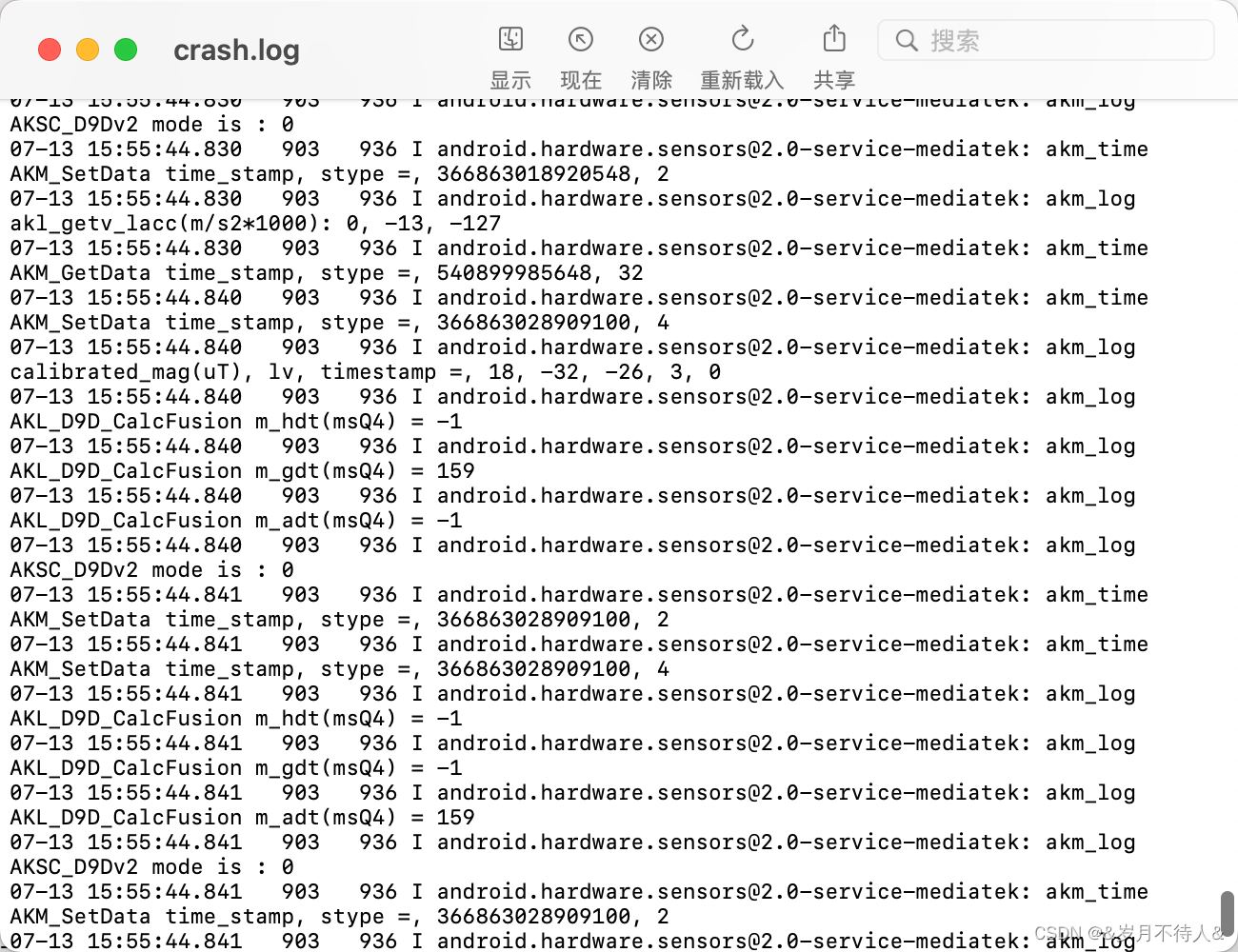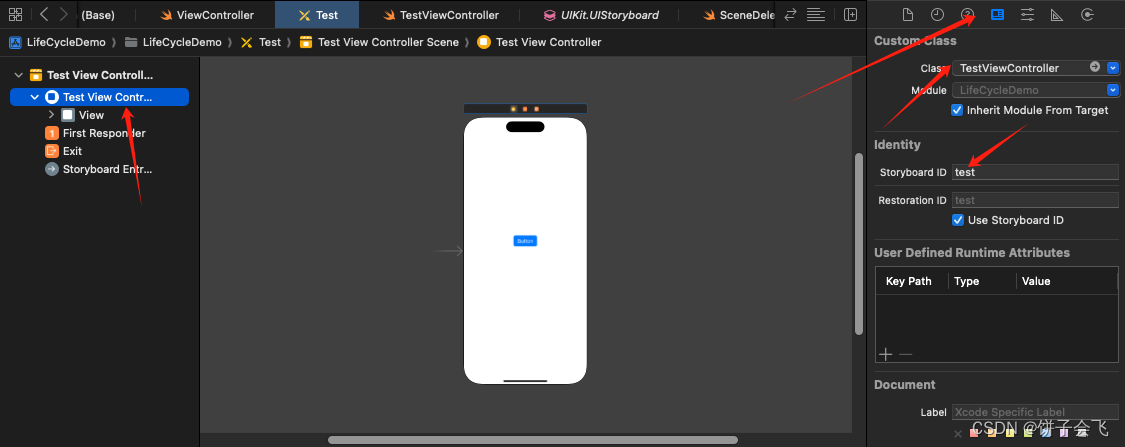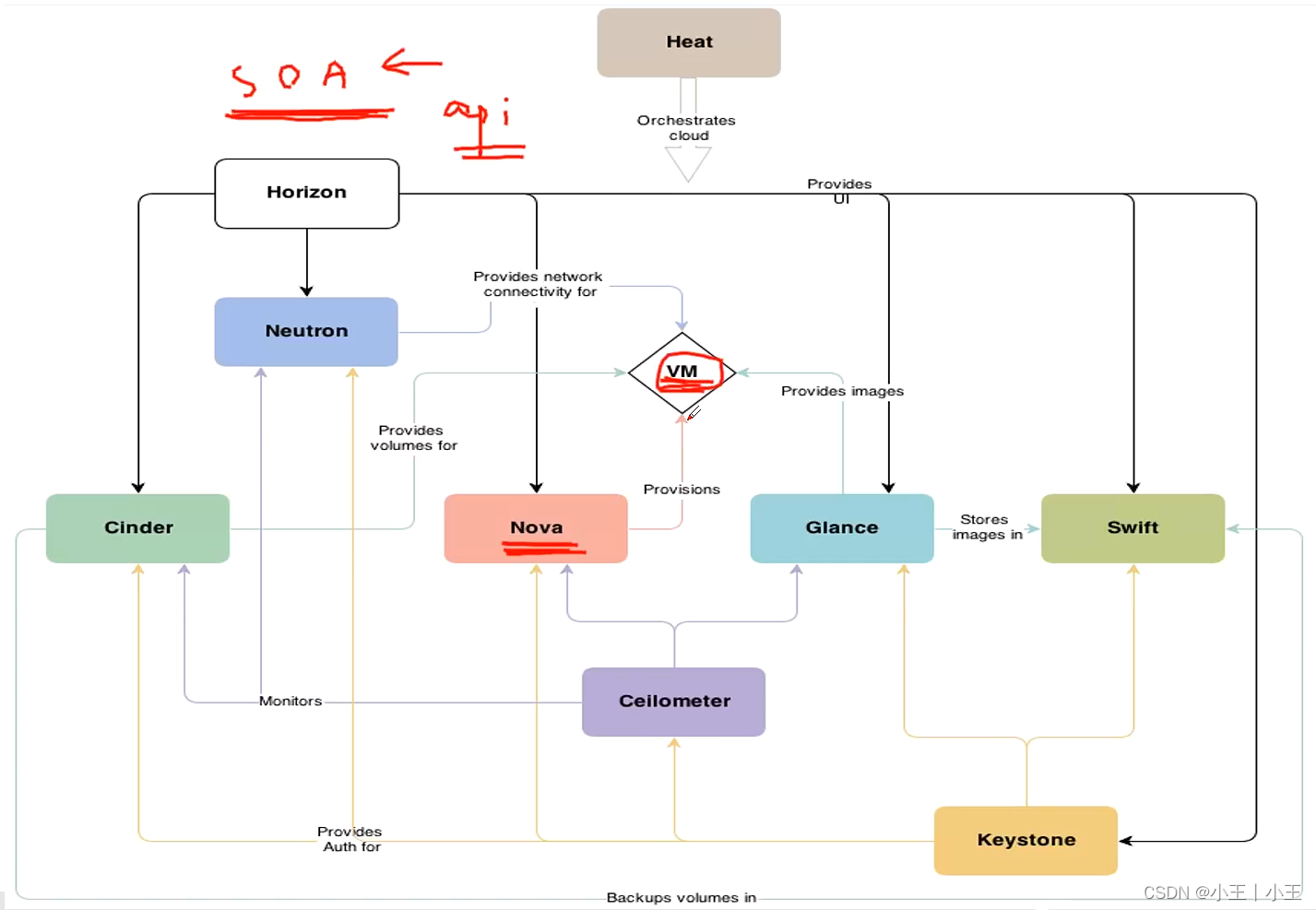本文介绍: 一、Crash详情Crash类型exception EXC_BREAKPOINT (SIGTRAP)reason EXC_BREAKPOINT EXC_ARM_BREAKPOINT fault_address:0x0000000185ba6824Crash堆栈0 libswiftCore.dylib 0x0000000185ba6824 swift_slowAlloc.cold….
一、Crash详情
exception EXC_BREAKPOINT (SIGTRAP)
reason EXC_BREAKPOINT EXC_ARM_BREAKPOINT fault_address:0x0000000185ba6824
Crash堆栈
0 libswiftCore.dylib 0x0000000185ba6824 swift_slowAlloc.cold.1 (in libswiftCore.dylib) + 16
1 libswiftCore.dylib 0x0000000185b2c9d8 _swift_slowAlloc (in libswiftCore.dylib) + 208
2 libswiftCore.dylib 0x0000000185b2cb48 _swift_allocObject (in libswiftCore.dylib) + 60
3 libswiftCore.dylib 0x0000000185abe67c specialized static _DictionaryStorage.resize(original: __RawDictionaryStorage, capacity: Int, move: Bool) (in libswiftCore.dylib) + 328
4 libswiftCore.dylib 0x000000018591fbf8 _NativeDictionary._copyOrMoveAndResize(capacity: Int, moveElements: Bool) (in libswiftCore.dylib) + 324
5 libswiftCore.dylib 0x0000000185920034 _NativeDictionary.ensureUnique(isUnique: Bool, capacity: Int) (in libswiftCore.dylib) + 52
二、分析过程
通过 异常类型 EXC_BREAKPOINT, 猜测是Swift Runtime中的异常触发, 参考SwiftAlloc的源代码
// When alignMask == ~(size_t(0)), allocation uses the "default"
// _swift_MinAllocationAlignment. This is different than calling swift_slowAlloc
// with `alignMask == _swift_MinAllocationAlignment - 1` because it forces
// the use of AlignedAlloc. This allows manually allocated to memory to always
// be deallocated with AlignedFree without knowledge of its original allocation
// alignment.
//
// For alignMask > (_minAllocationAlignment-1)
// i.e. alignment == 0 || alignment > _minAllocationAlignment:
// The runtime must use AlignedAlloc, and the standard library must
// deallocate using an alignment that meets the same condition.
//
// For alignMask <= (_minAllocationAlignment-1)
// i.e. 0 < alignment <= _minAllocationAlignment:
// The runtime may use either malloc or AlignedAlloc, and the standard library
// must deallocate using an identical alignment.
void *swift::swift_slowAlloc(size_t size, size_t alignMask) {
void *p;
// This check also forces "default" alignment to use AlignedAlloc.
if (alignMask <= MALLOC_ALIGN_MASK) {
#if defined(__APPLE__) && SWIFT_STDLIB_HAS_DARWIN_LIBMALLOC
p = malloc_zone_malloc(DEFAULT_ZONE(), size);
#else
p = malloc(size);
#endif
} else {
size_t alignment = (alignMask == ~(size_t(0)))
? _swift_MinAllocationAlignment
: alignMask + 1;
p = AlignedAlloc(size, alignment);
}
if (!p) swift::crash("Could not allocate memory.");
return p;
}
关于 EXC_BREAKPOINT
The breakpoint exception type indicates a trace trap interrupted the process. A trace trap gives an attached debugger the chance to interrupt the process at a specific point in its execution. On ARM processors, this appears as EXC_BREAKPOINT (SIGTRAP). On x86_64 processors, this appears as EXC_BAD_INSTRUCTION (SIGILL).
The Swift runtime uses trace traps for specific types of unrecoverable errors—see Addressing Crashes from Swift Runtime Errors for information on those errors. Some lower-level libraries, such as Dispatch, trap the process with this exception upon encountering an unrecoverable error, and log additional information about the error in the Additional Diagnostic Information section of the crash report. See Diagnostic Messages for information about those messages.
If you want to use the same technique in your own code for unrecoverable errors, call the __builtin_trap() function. This allows the system to generate a crash report with thread backtraces that show how you reached the unrecoverable error.
原文地址:https://blog.csdn.net/m0_55782613/article/details/122872681
本文来自互联网用户投稿,该文观点仅代表作者本人,不代表本站立场。本站仅提供信息存储空间服务,不拥有所有权,不承担相关法律责任。
如若转载,请注明出处:http://www.7code.cn/show_14289.html
如若内容造成侵权/违法违规/事实不符,请联系代码007邮箱:suwngjj01@126.com进行投诉反馈,一经查实,立即删除!
主题授权提示:请在后台主题设置-主题授权-激活主题的正版授权,授权购买:RiTheme官网
声明:本站所有文章,如无特殊说明或标注,均为本站原创发布。任何个人或组织,在未征得本站同意时,禁止复制、盗用、采集、发布本站内容到任何网站、书籍等各类媒体平台。如若本站内容侵犯了原著者的合法权益,可联系我们进行处理。







